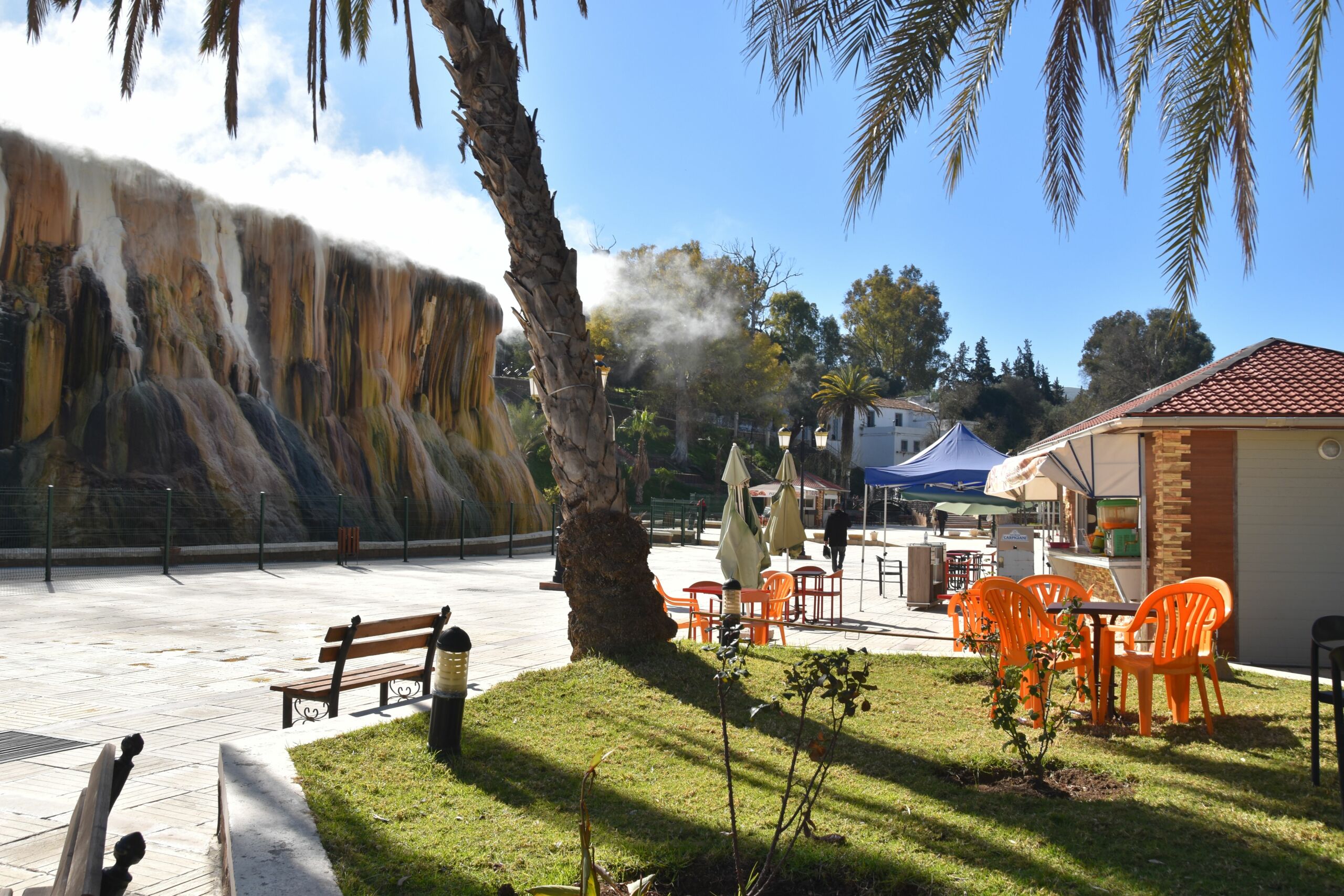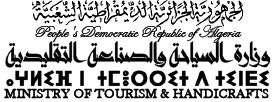Hammam Debagh is located in the east of Algeria, 22 km west of the town of Guelma, on the banks of the Oued Bou Hamdane, in the middle of breathtaking scenery and magnificent olive groves. It used to be called the “Hammam de Musc et de parfum”. During the French occupation, it was given the name “Hammam Meskhoutine”. This name was associated with an imaginary myth, illogical that everything belies! Indeed, it is said that during an incestuous wedding ceremony, God transformed them into conical stones, scattered on a plateau locally called the zone (El-Arayes) (the bride and groom) adjacent to the waterfall. The name was officially changed to “Hammam Debagh” in reference to the historical mountain of Debagh.
The site is characterised by the attraction of a growing number of tourists, from different provinces of the country, and even from abroad, due to the virtues and quality of its thermal waters, highly recommended in the treatment of many diseases, in addition to the charm of this exceptional region, which gathers many wonderful natural attractions and superb panoramic views, of which the most important are the unique rocky waterfall, which is the icon of natural tourism in Guelma, in addition to the area of El-Arayes, which is a natural museum of conical rocks (stalagmites), then Chaabet Cheddakha and the Chaouch bridge, up to Oued Bouhamdane and the dam of the same name, without forgetting the underground lake of Bir Ben Osmane. This is in addition to the large availability of thermal springs in the province. Indeed, in the area of Hammam Debagh alone, there are more than 10 thermal springs, half of which are located above the waterfall plateau. The temperature of the water is 97 degrees Celsius. It is the second hottest water in the world after Geyser in Iceland.
The thermal springs flow along the eastern slope of Châabet Cheddakha, extending over a distance of 6 km, from the heights of the Skhouna area in the municipality of Houari Boumediene to the mouth of the Châabet with the Oued Bouhamdane. The flow rate of the thermal spring water in Hammam Debagh is 500 litres/sec. It is characterised by its chemical and physical properties and its richness in carbonates, and has many therapeutic properties: rheumatic diseases, nervous diseases and atherosclerosis, pulmonary and respiratory diseases, gynaecology, the urinary system as well as skin diseases and allergies.
Thermal springs have been exploited in the region of Hammam Debagh since Antiquity, when the Romans established a thermal centre on the site, which they called Aquæ Thibilitanæ, and during the colonial period, a thermal station was established, which they called “the thermal station Hammam Meskhoutine” which still exists today. It consists of: a hotel and bungalows with a public garden in the middle, a military hospital and traditional baths. After independence, the Algerian State took an interest in thermal tourism, by realizing the thermal complex of Hammam Chellala, dedicated to medical tourism and leisure. It attracts a large number of tourists throughout the year, especially in winter and spring.
The Hammam Chellala complex, belonging to the HTT group, is classified as a 2-star hotel with a capacity of 530 beds. It offers first-class services, including: thermotherapy, massage rooms, sports and fitness rehabilitation, swimming pools, saunas, shower rooms (131 rooms), a hotel (170 beds), bungalows (112 bungalows) and a restaurant (120 places). An upgrading operation is currently underway to modernise and improve services. An extension of the complex is planned, which will result in the creation of a sports tourism complex consisting of a 4-star hotel with a capacity of 320 beds, a swimming pool and sports fields.
There are also tourist complexes and private hotels in the area, some of which are in operation, and others are under construction, notably: the Djihane thermal complex, the Ben Nadji hotel, a tourist residence project with a thermal centre, and a hotel project with a thermal centre.
There are also traditional baths in the region, namely: Hammam El-Misk or Tibe (28 rooms), Hammam Ben Nadji (30 rooms) and Hammam Kharchiche (14 rooms).






